Twin sleep schedules can feel like two clocks that never agree. One wakes early, the other drags the last nap. Why I made this is simple: I know how hard it is to get a quiet night when you juggle two tiny wake times. If you are a parent of twins, this is for you. I pulled together 26 tips that are simple, doable, and built for real homes.
Who it’s for. If you juggle two babies, chase two bedtimes, and want nights that feel calmer, this is for you. If you care about routines that fit a busy home, you’ll find ideas that work. These tips are made for real families with real chaos and real love.
1. Create a Consistent Bedtime Routine

First you want twins to settle fast at night. A steady bedtime helps their bodies know when to wind down. Create a routine you repeat every evening. Include a warm bath, a calm book, and soft songs.
Here is why this works: the routine lowers excitement and signals sleep.
– Pick a consistent start time for the routine.
– Use dim lights to make the room feel safe and cozy.
– Keep the routine short, about 25 to 30 minutes.
When you keep it predictable, twins calm faster. They move from play to rest with less fuss, making night smoother for you too.
1. Create a Consistent Bedtime Routine
Editor’s Choice

b&h Baby Thermometer, The Infant Baby Bath Floating Toy Safety Temperatu…
 Amazon$14.99
Amazon$14.99
2. Sync Their Sleep Schedules
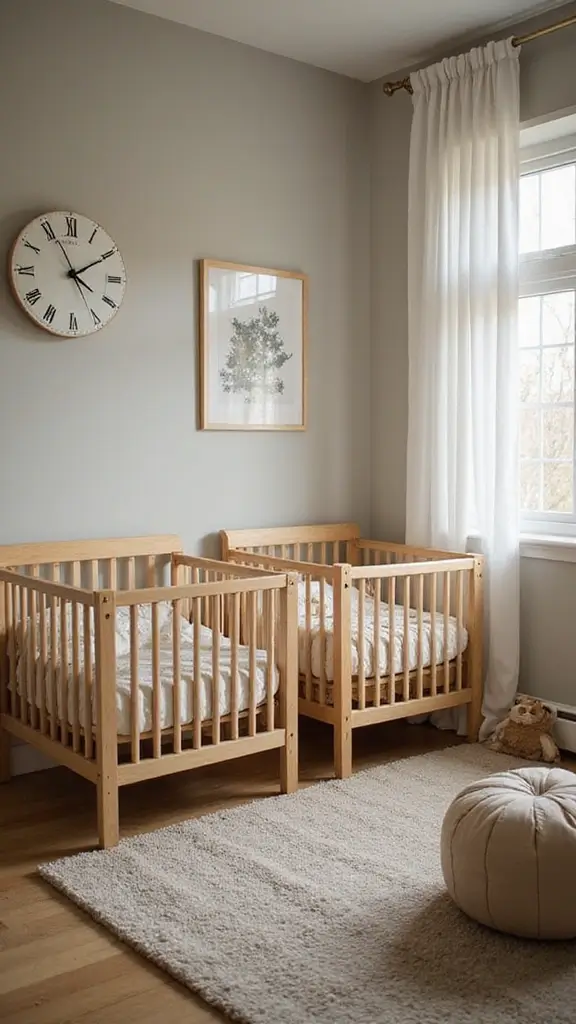
You want calm at home. Start with naps and bedtime at the same time. Put both twins down together. Watch for sleepy cues like yawns and rubbing eyes, and adjust slowly until naps line up. Create a soft space: dim lights, a gentle white-noise hum, and quiet music. If one wakes, use a brief, shared routine to settle them again. Stick with it for a week or two. This steady rhythm helps them learn to sleep side by side, bringing you a quieter house.
When both rest at the same time, you can take a breather, tidy up, or enjoy a quiet cup of tea.
2. Sync Their Sleep Schedules
Editor’s Choice

Magicteam White Noise Machine with 20 Non Looping Natural Soothing Sound…
 Amazon$19.99
Amazon$19.99
GE Sleeplite Night Lights Plug Into Wall, Dusk to Dawn Sensor, Ambient L…
 Amazon$8.81
Amazon$8.81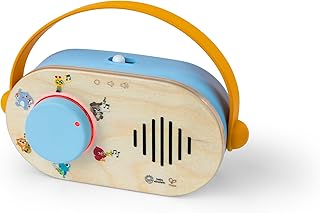
Baby Einstein + Hape Discovery Radio Toy Radio with Music & Lights, Ages…
 Amazon$14.99
Amazon$14.993. Leverage the Power of White Noise

Here’s a simple fix when twins wake up at night: use a white noise machine for babies. It soothes, masks sharp sounds, and keeps both babies calm.
– Why it helps: it echoes womb sounds and smooths the room.
– Quick setup: pick a compact machine with a timer and adjustable volume. Place it well away from cribs so it fills the room, not a single bed.
– Best practice: run it during naps and night sleep, then check for comfort. Keep the same sound every day for consistency.
Next steps: test, fine tune volume, and keep other sleep cues steady.
If you hear new noises, adjust the volume gradually over a few days.
3. Leverage the Power of White Noise
Editor’s Choice

Magicteam White Noise Machine with 20 Non Looping Natural Soothing Sound…
 Amazon$19.99
Amazon$19.994. Offer Comfort Items

Struggling with twin sleep schedules at bedtime? Here is why comfort items help. A soft blanket or a small stuffed toy gives a familiar hug and helps calm both kids after a busy day.
– What to pick Choose safe, age-appropriate items with soft textures.
– Use it in routines Let them hold their item during bedtime to create a ritual.
– Keep it simple Keep a small stash that’s easy to wash and rotate.
– Stay safe Avoid noisy or small parts that pose a choking risk.
– Backups help Offer a backup item in case they misplace the first.
With this approach, you help them fall asleep faster and stay soothed.
4. Offer Comfort Items
Editor’s Choice

Yurhap Fleece Baby Blanket Heart Checkered Blanket, Ultra Soft Cozy Baby…
 Amazon$8.99
Amazon$8.99
Melissa & Doug Burrow Bunny Stuffed Animal Plushie with Big Feet, Floppy…
 Amazon$18.99
Amazon$18.99
LUNAMIRA Penguin Kids Body Pillow – 47″ U-Shape Long Plush Animal Pillow…
 Amazon$69.95
Amazon$69.955. Utilize Staggered Naps (You Won’t Believe This One!)

Nap time for twins can split your plan in two. One baby yawns while the other stays awake. A staggered nap plan buys you calm minutes for your twin sleep schedule.
5. Try Staggered Naps (You Won’t Believe This One!)
Here is why it works. One nap lets you soothe the other without shouting.
– Start with the twin who looks sleepy.
– While they settle, soothe the other with a soft voice and a familiar blanket.
– After the first is down, give full attention to the second.
Keep this routine a few days, then tweak it to fit your home.
Next steps: try it tonight and note what changes.
5. Utilize Staggered Naps (You Won’t Believe Th…
Editor’s Choice

Magicteam White Noise Machine with 20 Non Looping Natural Soothing Sound…
 Amazon$19.99
Amazon$19.99
Yurhap Fleece Baby Blanket Heart Checkered Blanket, Ultra Soft Cozy Baby…
 Amazon$8.99
Amazon$8.99
HelloBaby Upgrade 5’’ Baby Monitor with 30-Hour Battery, 2 Cameras Pan-T…
 Amazon$109.99
Amazon$109.996. Adjust Nap Times Gradually

If your twins wake at different times, small nap shifts can fix it without a fight at bedtime.
– Move each nap by 15 to 30 minutes earlier or later, based on what you see in the day.
– Notice tired signals: slow eyes, rubs, or a heavy sigh.
– Stay flexible. If one child seems more awake, pause and try again tomorrow.
This gentle, steady approach helps their bodies line up with a shared night rhythm. The key is consistency over speed. Little changes add up and cut bedtime struggles.
6. Adjust Nap Times Gradually
Editor’s Choice

HelloBaby No WiFi Baby Monitor 5″ Screen 30-Hour Battery Pan-Tilt-Zoom V…
 AmazonGBP 49.78
AmazonGBP 49.78
Magicteam White Noise Machine with 20 Non Looping Natural Soothing Sound…
 Amazon$19.99
Amazon$19.997. Encourage Playtime Before Sleep

If your twins rush to bed with lots of energy, a short playtime before sleep can help. It lets them burn off steam and settles their moods for winding down.
Here is why it works for twins:
– Pick calm, interactive games that boost bonding. Think gentle tag with soft pillows, a quiet hide-and-seek, or a musical session with soft toys.
– Keep screens off to avoid overstimulation.
– End with a quiet activity like storytelling or slow-stretch time to ease the transition.
Next steps: plan a 10-minute routine, start 30 minutes before lights out, and watch their bedtime calm.
Try this tonight.
7. Encourage Playtime Before Sleep
Editor’s Choice

Reginary 4 Pcs Flower Floor Pillows Cute Plush Flower Throw Pillows Dais…
 Amazon$22.99
Amazon$22.99

BUNMO Sensory Toys Stretchy Strings for Toddlers 3+ – Stimulating & Addi…
 AmazonGBP 6.68
AmazonGBP 6.688. Create a Sleep-Friendly Environment

Facing twins who wake at different times? A calm sleep space helps.
– Light control Close the curtains or shades. Use blackout drapes for naps too.
– Temperature Set a comfy room temp around 68 to 72°F. A cool room makes it easier to fall asleep.
– Distractions Clear clutter and move toys away from sleep areas. Keep bright clocks or screens out of sight.
Add soft sounds: a fan or white noise to hush creaks and giggles. Keep the room clean and quiet, so each nap or night sleep lasts longer.
If your space is small, focus on the essentials. A simple routine helps twins settle at the same time. Reassess monthly to keep the room calm.
8. Create a Sleep-Friendly Environment
Editor’s Choice

NICETOWN Halloween Pitch Black Solid Thermal Insulated Grommet Blackout …
 Amazon$15.93
Amazon$15.93
Magicteam White Noise Machine with 20 Non Looping Natural Soothing Sound…
 Amazon$19.99
Amazon$19.99
ThermoPro TP50 Digital Hygrometer Indoor Thermometer Room Thermometer an…
 Amazon$9.99
Amazon$9.999. Monitor Feeding Times

If you want a steadier sleep plan, start with feeding times. When you feed both babies at the same moment, they tend to drift off together. Your night can feel calmer.
– Feed both twins at the same time to help them settle together.
– Use a double nursing pillow to keep them comfy and your hands free.
– Watch hunger cues, not the clock. Let each baby finish when full.
– After feeding, offer a short, quiet cuddle to help them settle.
This simple rhythm links feeding and sleep and boosts bonding during meals.
If one baby eats slowly, give a gentle pause and try again.
9. Monitor Feeding Times
Editor’s Choice

Twin Z Pillow Blue – Breastfeeding, Bottlefeeding, Tummy Time, Reflux, S…
 Amazon$142.00
Amazon$142.00
HelloBaby Upgrade 5’’ Baby Monitor with 30-Hour Battery, 2 Cameras Pan-T…
 Amazon$109.99
Amazon$109.99
Twin Swaddle Baby Blankets – 2-Pack, Oversized, Adjustable Newborn Wraps…
 Amazon$18.00
Amazon$18.0010. Use a Baby Monitor

If you care for twins, a baby monitor can ease bedtime stress. You can watch both cribs and hear their cries from one spot.
Here is why it helps.
– Video capability lets you check both babies at a glance.
– Two cameras or a dual-unit monitor keep an eye on each twin.
– Smart features include temperature readings and cry alerts.
– Easy setup and long battery life save you time.
A good monitor lets you stay in tune without waking them.
Test the setup during a nap. Check the range, the speaker volume, and the alarm time so you aren’t surprised.
A baby monitor isn’t just a gadget; it’s your best friend in managing twin sleep schedules! With the right features, you can keep the calm and stay connected to both cribs at once.
10. Use a Baby Monitor
Editor’s Choice

iFamily Split Screen Baby Monitor, Large Display Video Baby Monitor with…
 Amazon$65.99
Amazon$65.99
nooie 2K Smart WiFi Baby Monitor with Camera and Audio, Smartphone App C…
 Amazon$49.99
Amazon$49.99
HelloBaby No WiFi Baby Monitor 5″ Screen 30-Hour Battery Pan-Tilt-Zoom V…
 Amazon$66.99
Amazon$66.99
11. Be Mindful of Overstimulation

Overstimulation can make bed time a tough moment for twins. A calm hour before lights out helps their brains switch to sleep mode.
Here is how to cut the noise and bright stuff:
– Dim the lights and turn down TV sounds in the last hour.
– Put on soft music, a gentle lullaby, or nature sounds.
– Choose quiet, cozy activities like reading picture books, drawing with pastel colors, or quiet toys that don’t make big noise.
Keep the room comfy. Use a white noise machine or a fan to blur out sharp sounds. A calmer pace helps both twins settle faster.
11. Be Mindful of Overstimulation
Editor’s Choice

Magicteam White Noise Machine with 20 Non Looping Natural Soothing Sound…
 Amazon$19.99
Amazon$19.99
FamiSym White Noise Sound Machine Baby for Sleeping with Night Light – 3…
 Amazon$19.99
Amazon$19.99
COOLNIGHT Night Light for Kids, 93 Lighting+3 Films Kids Night Light Pro…
 Amazon$15.99
Amazon$15.9912. Try Different Sleep Positions
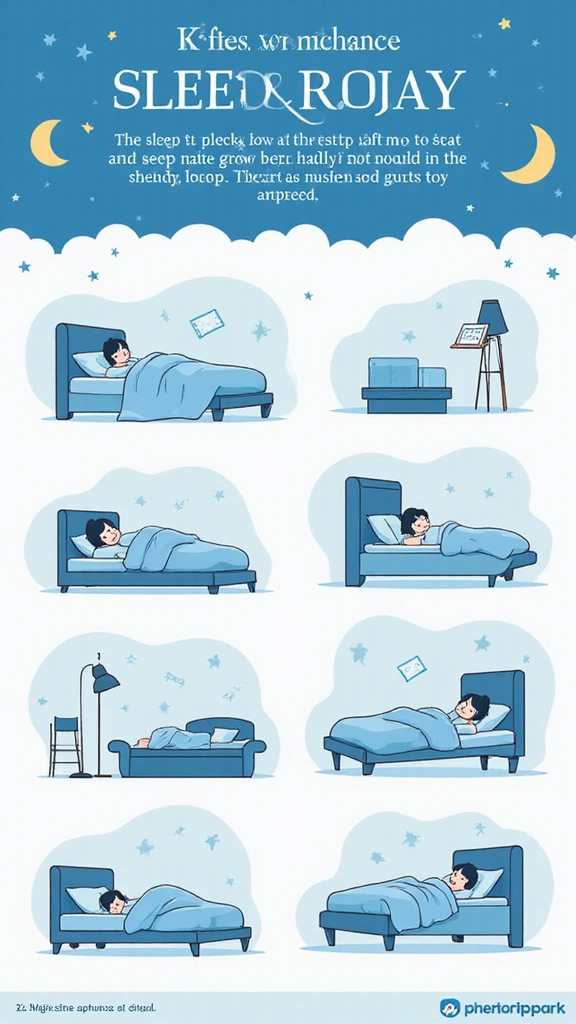
If your twins wake each other at night, you can try new sleep layouts. A calm setup helps them sleep longer and feel safe.
– Back-to-back in two cribs: position them with a gap between backs. Fewer bumps mean fewer wakeups.
– V shape: place the two cribs at a angle so arms and legs have room to stretch.
– Separate zones: give each baby its own space in its crib. A boundary helps them feel secure.
Keep the room cool, dim the lights, and use white noise to help them drift off.
Test one layout for a few nights, then adjust. You’ll learn what helps your twins sleep.
12. Try Different Sleep Positions
Editor’s Choice

Serta Perfect Start Limited Dual Sided Baby Crib Mattress and Toddler Ma…
 Amazon$69.99
Amazon$69.9913. Use a Gradual Sleep Training Method

Struggling with twin bedtimes? Gradual sleep training helps them soothe themselves and sleep longer. The Ferber method and gentle fading work well. Start at the right time, usually 4-6 months. Be patient and stay consistent. Monitor progress and adjust as needed. This approach builds steady sleep and a sense of independence for your twins.
– Start at the right age Begin around 4-6 months.
– Choose a method Pick Ferber or fading and stay consistent.
– Be patient and consistent Keep the routine the same.
– Monitor and adjust Track progress and tweak when needed.
Next steps: add a short wind down, soft lights.
13. Use a Gradual Sleep Training Method
Editor’s Choice

Kids Alarm Clock, Ok to Wake Clock with Green Light Red Light, Toddler S…
 Amazon$19.99
Amazon$19.99
Baby Sound Machine, Momcozy White Noise Machine for Baby Sleeping with N…
 AmazonCheck Price
AmazonCheck Price
GE Sleeplite Night Lights Plug Into Wall, Dusk to Dawn Sensor, Ambient L…
 Amazon$8.81
Amazon$8.8114. Celebrate Small Victories

Celebrate Small Victories as you manage twin sleep schedules.
Twin sleep schedules test patience. You need small wins to stay the course.
Here is how to celebrate and stay steady:
– Share progress with a trusted person. A quick message or coffee break can lift you.
– Treat yourself after a rough night. A warm shower, a short nap, or a snack.
– Keep a simple log. Note when both slept and how you stayed calm.
These tiny wins add real hope. They show you what works and keep you moving forward with twins. You’ve got this. Small wins today build a steady rhythm.
14. Celebrate Small Victories
Editor’s Choice

Kids Alarm Clock, Ok to Wake Clock with Green Light Red Light, Toddler S…
 Amazon$19.99
Amazon$19.99
Magicteam White Noise Machine with 20 Non Looping Natural Soothing Sound…
 Amazon$19.99
Amazon$19.99
Sleep: A Day and Night Reflection Journal (Guided Journal For Women, Sle…
 Amazon$15.71
Amazon$15.7115. Communicate with Your Partner

You want twin sleep times to feel calmer. The key is talk and teamwork. When you share the load, nights feel smoother and mornings less rushed.
– Set a simple, shared sleep plan – Choose bedtimes, wake times, and nap blocks that fit both of you. Put it on the fridge or in your phone. Review weekly and tweak.
– Speak openly about bumps – If one baby fights sleep, name it and pick a small fix together. Try moving bedtime by 15 minutes or swapping night duties.
– Celebrate small wins – Say thanks or leave a quick note. Acknowledge effort and progress to stay on track.
A strong partnership helps you guide twins with less stress and more calm.
16. Practice Patience and Flexibility

Bedtime for twins can swing from smooth to rough. Patience helps you ride those waves. Here is why: a flexible plan lowers stress and keeps their well being in focus.
– Stay adaptable to their changing needs. If one twin is gassy, or needs extra cuddle time, bend the routine rather than fight it.
– Be kind to yourself on tough nights. A deep breath, a quick walk, and a fresh start tomorrow goes a long way.
– Put their well being first. A warm routine beats a rigid clock every time.
Next steps: try a simple tweak this week, note what helps, and take small steps toward a calmer bedtime.
Patience is your greatest ally in managing twin sleep schedules. Embrace flexibility, breathe through the tough nights, and remember: a warm routine is better than a strict clock!
16. Practice Patience and Flexibility
Editor’s Choice

KeaBabies 3-Pack Organic Baby Swaddle Sleep Sacks – Swaddles for Newborn…
 AmazonGBP 19.29
AmazonGBP 19.29
17. Keep a Sleep Log

Struggling to keep twins on a steady sleep rhythm? A simple sleep log can save you time and stress.
Here is how to use it.
– What to record: Record nap times, nighttime sleeps, and awakenings.
– What can affect sleep: Note any new things like sickness, a trip, or a change in routine.
– Review cadence: Review the log weekly and look for patterns.
This small habit helps you plan gentle, real changes that fit your family.
Keep it simple. Use a notebook or a phone note app, and set a weekly reminder. You don’t need fancy tools. Tiny notes beat memory.
17. Keep a Sleep Log
Editor’s Choice

Sleep Diary: Manage & Track Sleep, Sleep Journal For Adults, Sleep Log B…
 Amazon$6.49
Amazon$6.49
ASHATA Ultra Thin Smart Ring, Health Fitness Tracker Ring to Monitor Fit…
 Amazon$22.65
Amazon$22.65
Bliss Collections Family Planner with 50 Undated 8.5 x 11 Tear-Off Sheet…
 Amazon$14.99
Amazon$14.9918. Encourage Independent Sleep

Encourage Independent Sleep
If you want twins who sleep longer on a schedule, teach them to drift off on their own. You help them learn self-soothing without hovering. Start by easing out of the bedtime routine a little at a time. A few steps away from the crib, then doorway, then out of the room for a moment. Let them try to settle themselves for short stretches. Use soothing items they already love, soft blankets, a favorite stuffed toy, a night light. With calm, consistent practice, their confidence grows, and it may take a few nights for them to settle.
18. Encourage Independent Sleep
Editor’s Choice

BORITAR Baby Blanket for Boys Girls Ultra Soft Fleece Warm and Lightweig…
 Amazon$9.99
Amazon$9.99
Pro Goleem Elephant Security Blanket, Soft Lovey Unisex Lovie Baby Gifts…
 Amazon$9.99
Amazon$9.99
Baby Night Light, Nursery Night Lamp for Breastfeeding, Soft BPA Free Si…
 Amazon$29.99
Amazon$29.9919. Opt for Gentle Sleep Aids

Gentle sleep aids for twins
If your twins stall at bedtime, gentle sleep aids can help you calm the room. A soft night light and quiet tunes create a safe space.
– Pick calming colors for night lights. Warm amber or peach feels soothing.
– Choose soothing sounds or lullabies for your kids.
– Check safety first. Make sure lights stay cool, cords are out of reach, and toys are safe for babies.
These aids ease the move to sleep and make night routines feel simple. If you notice fuss, start with one tool and add slowly.
Keep experimenting in small steps until you find the best mix.
19. Opt for Gentle Sleep Aids
Editor’s Choice

GE Sleeplite Night Lights Plug Into Wall, Dusk to Dawn Sensor, Ambient L…
 Amazon$8.81
Amazon$8.81
Magicteam White Noise Machine with 20 Non Looping Natural Soothing Sound…
 Amazon$19.99
Amazon$19.99
Happy Nappers: Lullabrites Lamb – Musical Light Up Bedtime Plush – Cream…
 Amazon$21.99
Amazon$21.9920. Foster a Calm Mindset

20. Build a Calm Mindset
Your calm mood shapes your twins’ sleep. A steady tone helps them feel safe and ready to rest. Here is how to keep that calm.
– Practice simple breathing: slow inhale, slow exhale, 4 counts each.
– Speak softly during bedtime and keep routines gentle.
– Accept the ups and downs of parenting with a steady pace.
When you stay calm, your twins mirror that energy and drift to sleep more easily.
Sit before bedtime and notice your breath. Let tension melt from your shoulders. Use a gentle touch, a slow pat, and warm light to cue winding down. You lead the way.
21. Limit Sugar Intake Before Bedtime

Why sugar matters at bedtime
Sugar can give kids a late energy spike. You want calm, easy sleep. Try this simple plan tonight.
– Choose snacks that are low in sugar. Plain yogurt, cheese and crackers, or a small fruit with nuts.
– Serve dinner earlier. Two hours before bed helps digestion.
– Offer water instead of juice or soda. It hydrates without a spike.
– Check labels for hidden sugars. Pick wiser options.
– Create a quick wind-down after dinner. Dim lights, soft music, or a story.
Consistency helps better nights.
Keep snacks small and switch as seasons change. You will see calmer nights.
21. Limit Sugar Intake Before Bedtime
Editor’s Choice

Rip Van Chocolate Hazelnut Wafer Cookies, Keto, Non-GMO, Healthy Snacks,…
 Amazon$18.99
Amazon$18.99
12oz Kids Water Bottle for School, Toddler Water Bottles with Straws, In…
 Amazon$9.99
Amazon$9.9922. Learn Your Twins’ Sleep Cues

If you want twins to sleep more smoothly, start with their signals. You can spot tired signs fast and keep routines steady.
– Yawns and fussing signal nap time is close.
– Energy shifts show when your twins want to rest. A small burst after a snack can lead to a sleepy moment.
– Pattern clues help you plan ahead. If one nap slips, you may see more yawns and whines later.
When you catch these signs, you can lay them down before overtired cries begin.
– Calm routine helps. Dim lights, a soft hum, and a gentle cuddle.
– Consistency matters most. Every day.
22. Learn Your Twins’ Sleep Cues
Editor’s Choice

Magicteam White Noise Machine with 20 Non Looping Natural Soothing Sound…
 Amazon$19.99
Amazon$19.99
The Newborn Twins Sleep Guide: The Nap and Nighttime Sanity Saver for Yo…
 Amazon$18.55
Amazon$18.55
LOHAS Plug in Night Light, Dimmable LED Night Lights With Dusk to Dawn S…
 Amazon$9.98
Amazon$9.9823. Reassess Your Schedule Periodically
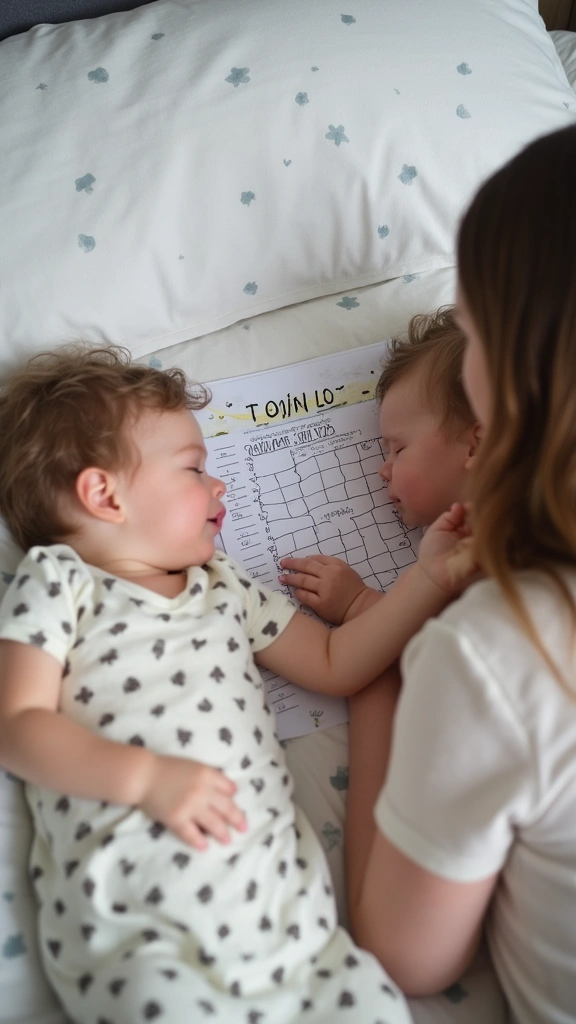
Your twins grow, and so do their sleep needs. Check your routine every few months. A quick tune-up keeps sleep smooth.
– Adjust nap lengths as they age and show new energy.
– Move bedtimes a little if they wake tired or fussy.
– Ask each twin what feels best. Small notes help you adjust.
An adaptable plan cuts wakeups and fights. You’ll spot signs like calmer mornings, steadier naps, and easier transitions. You sleep better when the clock fits their day. Try a simple weekly check and a bigger monthly tweak if needed. With practice, you keep calm and harmony at home.
23. Reassess Your Schedule Periodically
Editor’s Choice

Kids Alarm Clock, Ok to Wake Clock with Green Light Red Light, Toddler S…
 Amazon$19.99
Amazon$19.99
Magicteam White Noise Machine with 20 Non Looping Natural Soothing Sound…
 Amazon$19.99
Amazon$19.9924. Seek Support When Needed

Seek support when you need it
Juggling two sleep schedules is tough. You feel stretched thin and tired. You don’t have to go it alone.
Here is why support helps. Fresh ideas, calmer days, and someone to vent to can make a big difference.
Ways to get help
– Join online twin parenting forums. You can swap nap plans, night strategies, and small wins.
– Plan playdates with other twin families. Trading babysitting ideas lightens the load.
– Talk with your pediatrician for sleep tips tailored to your kids.
Two quick steps:
– Pick one option this week and set a time to join or call.
– Try two tips you hear and note what works over three nights.
Juggling two sleep schedules is tough, but remember: you’re not alone! Seek support from fellow twin parents, and watch your days transform into calmer, more manageable adventures.
25. Invest in High-Quality Cribs

If you want calmer nights for your twins, start with a good crib. A safe, comfy bed helps them settle faster.
Key factors to look for
– Adjustable mattress heights so the bed fits as babies grow.
– Sturdy, non-toxic materials with safe finishes.
– A compact size that still fits your nursery and leaves space for air and movement.
– Convertible options that can become a toddler bed later, saving money.
– Easy-to-clean features like wipeable rails and washable covers.
Choose a model that fits your room now and looks good for years. This setup supports two babies, keeps routines steady, and helps you sleep.
Ask staff about warranty, safety tests, and quick assembly.
25. Invest in High-Quality Cribs
Editor’s Choice

Dream On Me Synergy 5-in-1 Convertible Full-Size Baby Crib with Toddler,…
 Amazon$126.51
Amazon$126.51
Graco Premium Crib & Toddler Mattress – GREENGUARD Gold Certified, Certi…
 Amazon$97.84
Amazon$97.84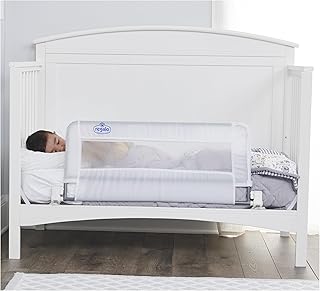
Regalo Swing Down Crib Rail, with Reinforced Anchor Safety System
 AmazonEUR 23.84
AmazonEUR 23.8426. Remember, Every Twin is Unique

Remember, Every Twin Is Unique Your twins are unique. A trick that helps one set may not work for another. Notice their day and night sleep patterns. You adjust the plan step by step. Start small; note changes. You can keep goals: longer stretches at night and predictable naps.
– Be patient and ready to adjust your approach as you learn each twin’s cues.
– Celebrate what makes each twin different, with nap times and wake moments.
– Keep trying ideas until you find a rhythm that fits both kids and you.
This flexible stance brings calmer evenings and happier mornings for home.
Each twin is a world of their own! Embrace their unique sleep cues and adjust your strategies. A little patience and creativity can turn chaos into a beautiful rhythm for managing twin sleep schedules.
Conclusion

Mastering twin sleep schedules is a journey filled with ups and downs, but with these tips, you’re well on your way to creating a harmonious routine. Remember that patience, adaptability, and love are key ingredients in this adventure.
Connecting with other parents can also provide support and encouragement along the way. Celebrate the small wins and enjoy the beautiful moments of twin parenting!
Note: We aim to provide accurate product links, but some may occasionally expire or become unavailable. If this happens, please search directly on Amazon for the product or a suitable alternative.
This post contains Amazon affiliate links, meaning I may earn a small commission if you purchase through my links, at no extra cost to you.
Frequently Asked Questions
What Are Some Effective Strategies for Managing Twin Sleep Schedules?
Managing twin sleep schedules can feel like a juggling act, but don’t worry! Start by creating a consistent bedtime routine that signals to both twins it’s time to wind down. You can include a warm bath, calming books, and soft songs to help them settle faster. Syncing their sleep schedules is key—try putting them down for naps and bedtime at the same time to foster harmony in their sleep patterns.
How Can I Help My Twins Sleep Better at Night?
To help your twins sleep better at night, consider using a white noise machine. This can mask sudden sounds that might wake them up and create a soothing atmosphere reminiscent of the womb. Additionally, establishing a calm sleep environment by controlling the light and temperature can make a significant difference. Remember, a comforting routine before bed can also ease their transition to sleep!
What Should I Do If One Twin Wakes Up While the Other Is Still Sleeping?
If one twin wakes while the other is still snoozing, try utilizing staggered naps. This approach can give you some calm moments and help manage twin sleep schedules more effectively. Additionally, consider monitoring their sleepy cues and adjusting nap times gradually based on their individual needs. This way, you can create a more harmonious sleep routine for both little ones.
How Important Is It to Communicate with My Partner About Twin Sleep Schedules?
Communication with your partner is incredibly important when managing twin sleep schedules! By setting a shared sleep plan and discussing roles during nighttime routines, you can create a smoother experience for both of you. Teamwork is essential—when you both stay on the same page, it reduces stress and helps ensure that your twins have a consistent and calming bedtime environment.
What If My Twins Have Different Sleep Cues?
It’s totally normal for twins to have different sleep cues, but learning to recognize them is crucial! Pay attention to signs like yawning, fussiness, or rubbing their eyes. This can help you adjust their sleep schedules accordingly. Remember, each twin is unique, so be patient and flexible. By tuning into their individual needs, you’ll be better equipped to create a harmonious sleep routine that works for both.
